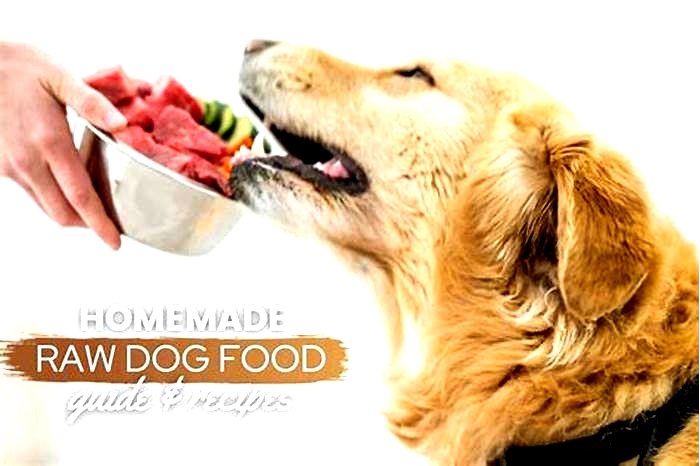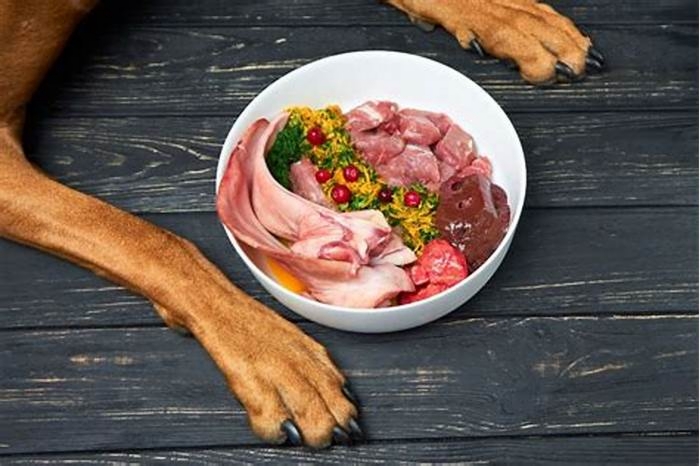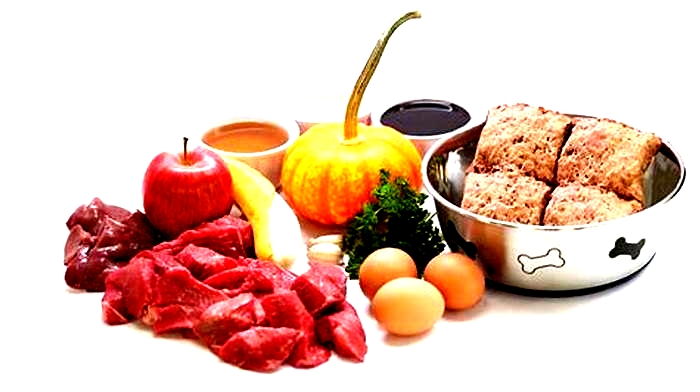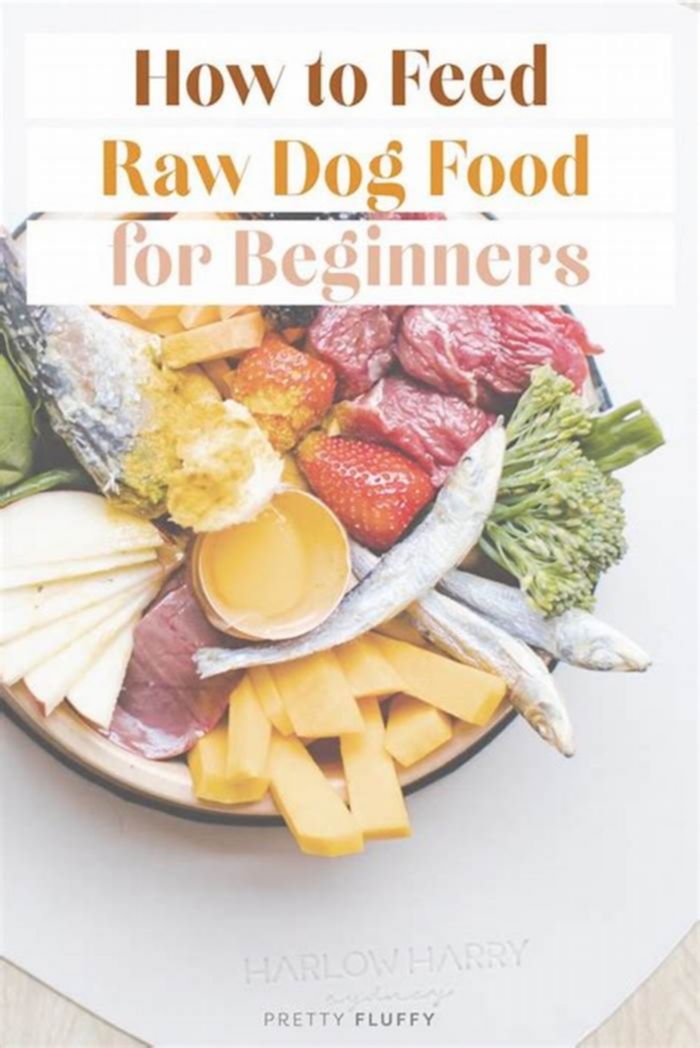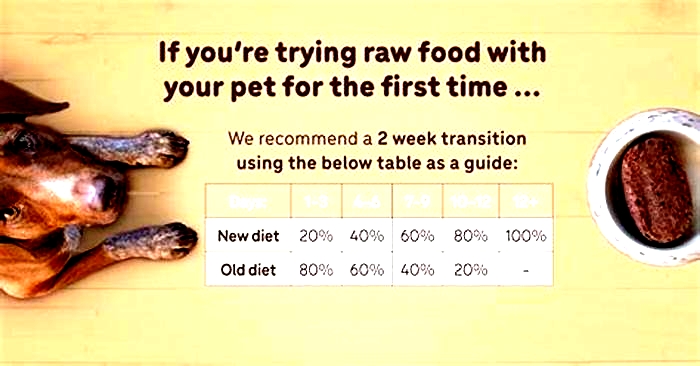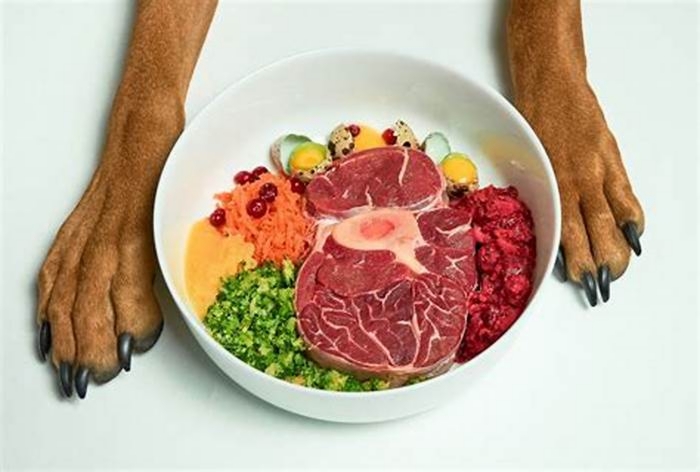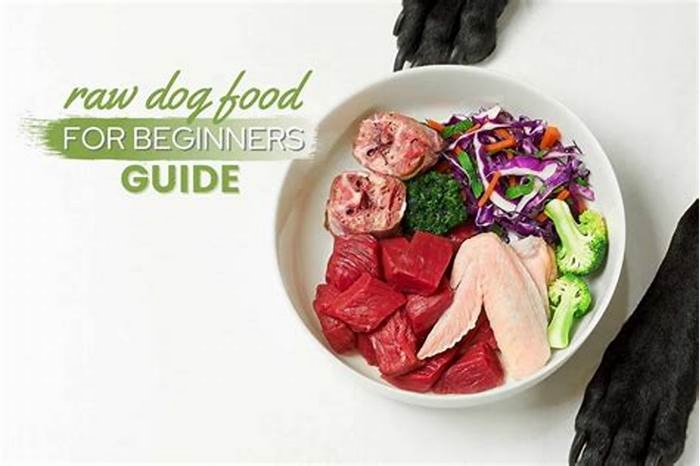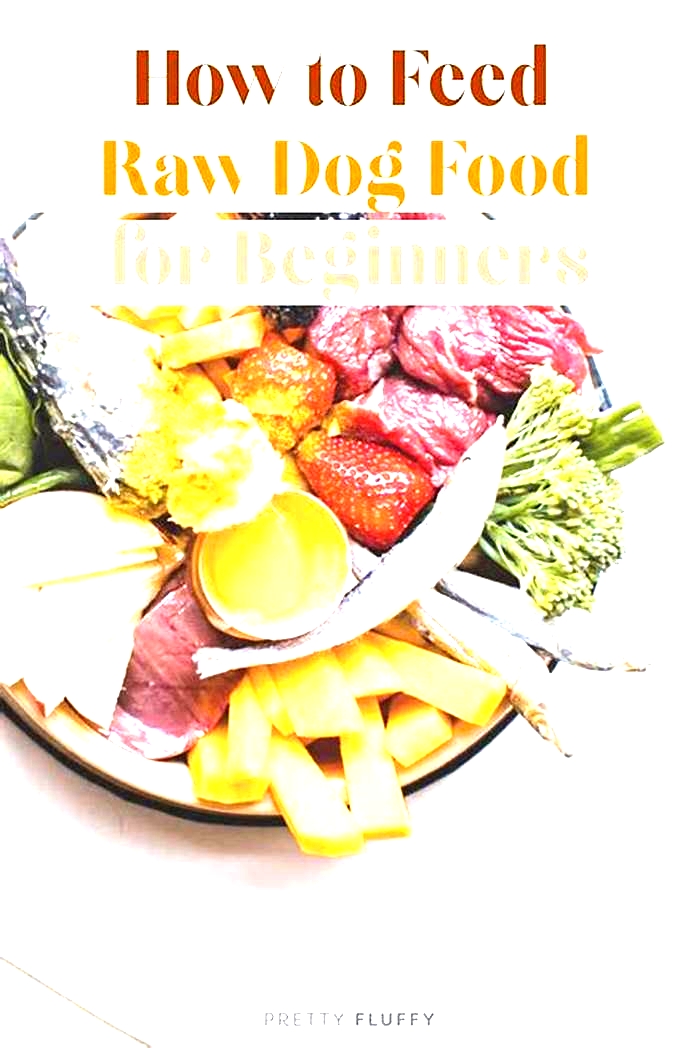Superior Canine Nutrition Crafting Optimal Raw Dog Meals
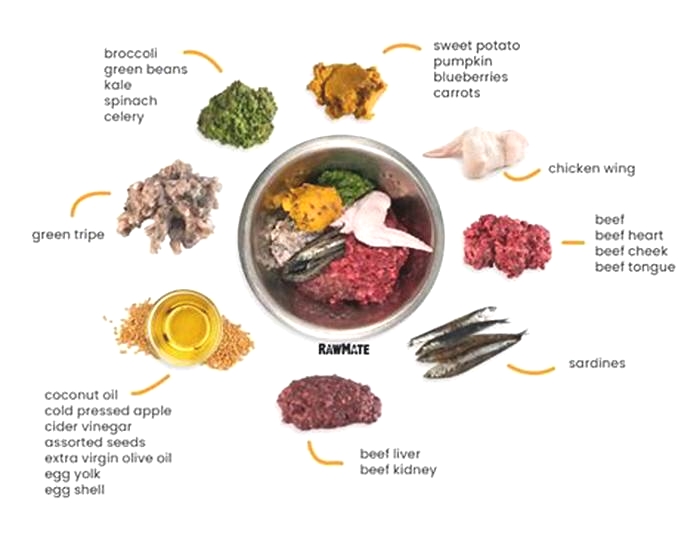
Holistic Dog Diet: A Guide to Natural Meal Planning
In the realm of dog parenthood, feeding our four-legged friends a diet thats as close to what Mother Nature intended isnt just a trendits a return to basics. But what does a holistic meal plan for your dog look like? Is it merely a bowl of raw meat, or is there more to the story? Lets embark on a culinary journey, one that promises to be as enriching for your dog as it is for you.
The Essence of a Holistic Diet
The cornerstone of a holistic diet for dogs is balance. Its not just about the individual ingredients but how they come together to support your dogs health, energy, and wellbeing. A holistic diet focuses on natural, whole foods that are free from artificial additives, with an emphasis on quality and nutritional value.
Why Go Holistic?
Our canine companions thrive on a diet that mimics their ancestral feeding habits. This means meals that are rich in proteins, balanced with vegetables, fruits, and select grains, providing a spectrum of vitamins, minerals, and antioxidants. The goal? To support their bodys natural functions, promote a healthy gut microbiome, and enhance their immune system.
Components of a Holistic Meal Plan
Crafting the perfect meal plan for your dog involves understanding the components that should be included:
- High-Quality Protein: This is the linchpin of your dogs diet. Sources can include freshly prepared meats like chicken, beef, lamb, and fish. Organ meats are also a powerhouse of nutrition.
- Vegetables and Fruits: Theyre not just fillers; theyre a vital source of fibre, vitamins, and minerals. Carrots, pumpkins, blueberries, and apples are great options. However, remember to avoid toxic foods like grapes and onions.
- Healthy Fats: Essential for energy and cell function, healthy fats can come from sources like fish oil, flaxseed, and coconut oil, offering a balance of omega-3 and omega-6 fatty acids.
- Natural Supplements: Depending on your dogs specific needs, supplements like probiotics, glucosamine for joint health, and vitamins can be beneficial. Always consult with your vet before adding supplements to your dogs diet.
The Transition to a Holistic Diet
Transitioning your dog to a new diet should be a gradual process. Start by mixing a small portion of the new food with their current diet, gradually increasing the amount over a week or so. This slow transition helps avoid digestive upsets and allows you to monitor your dogs reaction to the new diet.
Monitoring Your Dogs Health
Keep an eye on your dogs energy levels, coat health, weight, and stool quality. These are indicators of how well the diet suits your dog. A holistic diet, when balanced and tailored to your dogs individual needs, can lead to visible improvements in these areas.
Crafting the Meals: Practical Tips
- Variety is Key: Rotate the protein sources and vegetables to ensure a broad spectrum of nutrients.
- Quality Over Quantity: Choose fresh, organic ingredients whenever possible to minimise exposure to pesticides and toxins.
- Cooked vs Raw: Some proponents of holistic diets advocate for raw feeding, while others prefer lightly cooked meals to ensure safety from pathogens. The choice depends on your dogs health, age, and specific needs, as well as your own comfort level.
A Word of Caution
While the holistic approach offers numerous benefits, its essential to tailor the diet to your dogs specific needs. Age, breed, activity level, and health conditions should all factor into meal planning. Consulting with a veterinarian, ideally one with experience in holistic nutrition, can provide you with a roadmap tailored to your dogs unique requirements.
Fetching Answers: Your Top Questions
Why should I consider a holistic diet for my dog?
A holistic diet can improve your dogs health by providing them with natural, nutrient-rich foods. Benefits often include better digestion, improved coat health, increased energy levels, and a stronger immune system.
How do I transition my dog to a holistic diet?
Transition your dog gradually over a period of 7-10 days, starting with a small amount of the new food mixed into their current diet. Gradually increase the proportion of new food while decreasing the old food to prevent digestive issues.
How do I know if the holistic diet is working for my dog?
Monitor your dog for signs of improved health, such as higher energy levels, a shinier coat, better digestion, and overall contentment. If you have concerns or notice adverse effects, consult your vet.
In Conclusion
Embracing a holistic diet for your dog is a journey back to the basics, to a time when dogs thrived on the bounty of nature. Its an approach that requires thought, care, and a dash of lovea recipe for a happy, healthy dog.
As we wrap up this culinary adventure, remember, the best diet for your dog is one that supports their health while delighting their taste buds. Heres to many joyful meals and wagging tails!
Like this:
Like Loading...
Raw dog food the big questions
Raw dog food diets have been around as long as dogs and their ancestors have been around. Until the creation of dry dog food and canned dog food, dogs lived off raw meat, scraps and anything they could scavenge.
You may have heard of the old English expression as fit as a butchers dog, which implies that a dog living off meat, bones and offal is likely to be in fine fettle.
However, after the creation and growth of mass-market dog food, domestic dogs diets changed and the feeding of raw dog food became less common. That is until recent years
Raw food for dogs has increased in popularity in recent years; some of it homemade, some produced by cottage industries, but increasingly provided by medium to large companies for a national market.
What are the best raw dog foods?
Some work on the prey model, which is an 80% meat, 10% ground bone, 10% organ meat (offal) blend. Others use the recipes akin to the Biologically Appropriate Raw Food (BARF) model, which includes a small percentage of vegetables.
Both kinds profess an authenticity based on dogs evolutionary diets.
It being something new (but also very old) it has generated a lot of doubt, cynicism and questions alongside its popularity.
We put some of the questions we most frequently get asked by readers to Amy Zalneraitis, the CBO at 5-star-rated We Feed Raw.
Is raw dog food safe for dogs?
AZ: Raw dog food is not only safe for dogs, its what is most biologically appropriate for them. Dogs have thrived on a raw, meat-based diet since the dawn of their existence. While weve domesticated dogs and bred them for their appearance, behavior, and temperament, in form and function, their digestive system is identical to their ancestors. With highly acidic stomachs, sharp, pointy teeth, and short, simple digestive tracts, a dogs biology tells us what they should be eating.
So any raw food will do?
Not all raw pet foods are created equal. We use only high-quality, USDA, human-grade meats. We produce our recipes in a USDA-certified facility and all ingredients must comply with rigid incoming quality assurance specifications. Most importantly, to ensure safe raw feeding in the home, we use HPP (high-pressure processing) a non-thermal pasteurization technology that uses extreme cold water pressure (up to 87,000 psi) to ensure our food is free of pathogens such as Listeria, E. coli, and Salmonella.
While not all raw companies in the U.S. do this, we incur the extra cost because it ensures a safe product. Because the process uses pressure rather than heat, there is no change in product taste, texture, or nutritional value.
Is raw dog food safe for humans?
It depends if you mean to eat or handle. While our food is sourced from USDA, human-grade meats, our recipes are not intended for human consumption. Our formulas contain the correct ratio of muscle meat, organ meat, finely ground bone and a high-quality vitamin and mineral mix for full and proper canine nutrition, not full and proper human nutrition.
As for handling, dogs can cope with bacteria in ways that humans cant, but HPP offers extra peace of mind while feeding raw in the home. HPP is used by many reputable raw pet food companies because its a natural way to reduce harmful bacteria while preserving nutrients.
When youre purchasing raw pet food from a reputable company, its easy to feed raw food safely you use the same basic hygiene practices you use when preparing your own raw meats to cook, like washing hands, surfaces, and bowls.
Its more expensive than kibble why should I spend extra?
Because the quality of the food our dogs eat has a direct impact on how well they live. Eighty percent of immune capability is in the gut and low-carb raw diets help to promote healthy gut microflora. Raw food will always be more expensive because quality costs more. Hands down, raw costs more to source and make and its not packed with cheap fillers. While youll pay more upfront with raw, youll save money down the line because youll have a healthier, happier dog and far fewer vet visits.
Why wouldnt I just make raw food at home?
If youre a DIY raw feeder, amazing! Great job! But weve found that many pet parents dont have the time, energy, interest, or resources to make properly balanced raw food at home. Thats where we come in. We plan, portion, package, and deliver. All you have to do is thaw and feed. No concern that your dog is missing important nutrients, no trips to the pet food store, no guesswork.
Do dogs need vegetables?
Our recipes are based on the Prey Model Raw diet: approximately 80% muscle meat (with connective tissue and fat), 10% organ meat (all of which is secreting organ), 10% finely ground raw meaty bones plus a small amount of a high-quality vitamin and mineral mix.
Some of our customers will choose to add veggies to the meals, and thats great, as long as they dont overdo it. If your dog does well with a bit of extra fiber, our Ph.D. nutritionist suggests around a 5-8% veggie inclusion. With dogs, plant matter usually passes out as part of the stool, undigested because their bodies have to work much harder to break it down.
We usually recommend pureeing veggies: dogs do not have natural cellulase, an enzyme that helps to break down fiber, so pureeing them will help aid in digestion.
Do I need to add supplements?
Not with our food. Our food is complete and balanced as is. No need to add supplements. That said, its totally fine to add a small amount of your preferred probiotic, prebiotic, fish oil or omega-3 oil, etc. We just advise that pet parents dont add a multivitamin, as we already include a high-quality vitamin and mineral mix to our recipes.
When it comes to adding other whole foods, like canned pumpkin, phytoplankton, sardines, green-lipped mussels, etc, these can be wonderful, healthy additions and we totally support those as toppers to our meals.
Are there any proven benefits to a raw diet?
A dogs digestive system is identical to its ancestors. They didnt lose the ability to digest their evolutionary diet just because kibble was invented mere seconds ago in geologic time. Therefore, isnt it prudent to imitate what nature provided as a guideline?
As for specific studies, were excited about the work being done at the University of Helsinki on the benefits of a raw dog food diet. Led by veterinary scientist Dr. Anna-Hielm Bjrkman (DVM and PhD), The Dog Risk Study is a university-led, cruelty-free study using 16,000 dogs of all breeds and ages.
The program has already proven that puppies fed raw (vs kibble) have fewer environmental allergies as adults and a reduced risk of developing IBD later in life. Some of the other specific studies its exploring include hip dysplasia, GI issues, chronic ear infections, cancer and tumors.
How do I transition my dog to raw food?
Our intro plan helps to gradually introduce dogs to raw food over a 10-day period. The detailed directions instruct pet parents on how to mix their pups current food with We Feed Raw and increase the percentage of We Feed Raw over the course of 9 days until theyre feeding 100% raw.
What are the best raw dog foods?
Will there be side effects?
While some dogs transition to raw with no issues, other dogs with sensitive stomachs may require a bit more TLC and time. Its all normal. The long-term effects of a healthy, species-appropriate diet make it all worth it: smaller, less smelly stools, shiny skin and coat, cleaner teeth, improved digestion, stronger immune system, better weight control the list goes on.
Can I mix raw food with cooked food?
Yes, absolutely. We encourage pet parents to feed what works for their budget and lifestyle. Adding even 25% raw food to your dogs diet can have life-changing health benefits. Raw feeding isnt an all-or-nothing approach. Using it as a base, mixer, or topper with cooked food or kibble can still have amazing overall health benefits.
Why are some vets anti-raw food?
Were seeing a real shift with conventional vets becoming more raw-friendly. In fact, we work with many conventional vets who not only recommend raw to their clients but feed it to their own pets.
So while the tide is changing, here are some reasons that conventional vets may not be pro-raw: 1) Theyre not taught about raw diets in vet school; 2) Theyve seen homemade raw diets go wrong (imbalanced, missing important nutrients, incorrect ratios); 3) They think its a danger to the humans feeding it. However, serious and reputable raw brands in the U.S., like our company, use HPP to neutralize pathogens for safe feeding in the home.
Is raw dog food human-grade?
Raw dog food is meant to be fed raw and usually contains bone, and therefore cannot technically be labeled human-grade as a whole. So while our food is sourced from high-quality human-grade meats and produced in a USDA-certified facility, we do not make the human-grade claim on our labels.
Are bones and offal actually good for dogs?
Not only are they good for dogs, theyre essential to a complete and balanced raw diet. Organ meats, particularly liver, are packed with vitamins and minerals. Bones are an excellent source of calcium and phosphorus.

